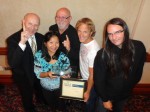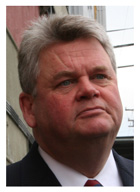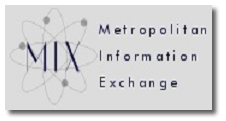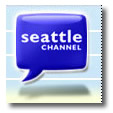 Why are human beings and governments so attracted to bright shiny objects such as smart phone apps?
Why are human beings and governments so attracted to bright shiny objects such as smart phone apps?
I’m sure there is a psychological malady in here somewhere – perhaps a “Bright Shiny Object Syndrome” (BSOS), which also might explain why some people passionately love geocaching and others are inveterate collectors of stuff and still others become compulsive hoarders. And BSOS may be related to that urban legend(?) about capturing monkeys by putting bright shiny objects (BSOs) into a monkey trap.
Certainly Apple seems to be making a handsome living off BSOS, with over 10 billion downloads from its iPhone Apps store at a 30% cut of the price each. Apple also receives a percentage from iTunes music downloads, and has capitalized on what I would call “hardware BSO” by being first to market with products like the iPod, iPhone and iPad. Of course plenty of other companies also cash in on BSO. A perfect example is all the companies hoping to make money in the forthcoming boom in tablet computers this year.
How does this all relate to government?
Government employees, including senior executives and elected officials, range the gamut from early adopters to tech troglodytes. And more than a few of them are afflicted with BSO syndrome. Sometimes that’s harmless, like the employee who has an iPod plus video camera plus digital camera plus iPad and maybe two kinds of Smart Phones. As long as “he” (they are usually men) uses his desktop computer with Windows XP for work, and operates all those gadgets on his own time, I see no harm in this.
A worse situation is a senior official who directs the government or department he/she leads to adopt the latest gee-whiz gadgets or web applications without connection to either the department’s business strategic plan or a coherent technology plan. Then that department tries to simultaneously reach constituents – and perhaps obtain input from them – via too many methods, such as:
- a website (and maybe a variety of website domains such as countyparks.gov and parksforall.com and a domain for each major park)
- a variety of online services such as payment engines, permit applications, maps etc.
- blogs (and comments on blogs)
- tweets (and @replies)
- many different facebook pages
- webforms
- multiple YouTube postings and channels, in addition to the municipal cable TV channel
- open data
- smartphone apps
- e-mail
- mass-e-mailed newsletters
- crowdsourcing via a tool such as Google Moderator or Ideascale
- and probably via other bright-shiny-methods.
Sometimes I almost feel I “resemble these remarks” (i.e. have BSO syndrome myself): The City of Seattle has a number of web applications and “bright shiny objects” such as Citylink – interconnected blogs at citylink.seattle.gov, multiple tweeting departments, a whole set of interactive services for making payments and obtaining information, a variety of Facebook pages and social media sites, open data at data.seattle.gov, a customizable website at my.seattle.gov, an award-winning municipal TV channel and much more.
So I’ll offer some tips – and this is advice the City of Seattle itself doesn’t always follow – on avoiding BSO syndrome in a world of Web 2.0 and Gov 2.0:
1. Establish the brand of your website and try not to dilute it. We have established www.seattle.gov as the definitive site for Seattle’s City government. We actively resist setting up a whole series of competing domains with City information, e.g. seattlewater.gov or twistandsave.com (for a compact florescent bulb promotion). We host our own implementation of WordPress, so that even the blogs (citylink.seattle.gov) are really part of the website.
I’ll be honest – this tenet is often hard to follow. Many departments think they have some unique message which has to be communicated in a unique way with their own domain and website. Sometimes this is just a new departmental web administrator trying to make a name for him/herself as a cool web designer. Sometimes it is a legitimate request. And sometimes it is something else entirely. As CIO I need the wisdom of Solomon to recognize the difference!
2. Drive traffic and inquiries back to the website from the other media. When you tweet, include a link back to information on the website or in a blog. When posting to the department’s Facebook wall, make the post short and succinct (include a photo or two, if appropriate) and link back to more information or an app on the website.
3. Try to make the website as consistent as possible in look, feel and operation. Use consistent headers, footers and navigation, as well as the same look-and-feel throughout the site. Any government is not a collection of independent departments, but one entity headed by a single elected official with a single elected legislative body. And try to be consistent in using a single payment engine for online payments, as well as “single sign-on” – one userid and password which provides access to all of the government’s online services.
4. Be judicious in the proper use of tools. In other words, use the right tool for the job. Too often we have a hammer, so everything we see looks like a nail, even if in reality it is a screw or window or thumb.
The best example of this is probably Citizens’ Briefing Book. In January, 2009, President Obama’s transition team used Google moderator to try and crowdsource the major issues facing the nation. Ideas such as “legalize marijuana”, “legalize online poker” and “revoke the tax status of the Church of Scientology” bubbled to the top. Citizens’ Briefing Book is a noble effort, but I seriously doubt the tax status of Scientology is one of the most serious issues facing the nation! Such crowdsourcing tools are more properly applied to single, specific, issues such as “what do we do with this vacant piece of land” rather than broad ones like “what are our budget priorities”. Broad-based questions can be easily “gamed”.
5. Dilution of effort. Some governments or departments are huge, and can devote a lot of people and resources to maintaining a vast variety of social media and web channels for information. A San Francisco or Seattle can have numerous Facebook pages and twitter accounts.
But in every case – large or small, governments should start with just a few social media channels tailored to their communities. Some communities will rarely use twitter, or will rely on traditional sources (TV stations or newspapers) for information. Others will actively get information from blogs or Facebook postings. Trying to do too much – too many social media channels – will be difficult to keep operating and only confuse the public or weaken their confidence in government.
6. Fail fast. If you try a new social media channel and it doesn’t resonate with constituents, close it down and post a “nothing to see here anymore – see our website” notice on the door.
7. Assign responsibility. Most departments will assign their public information staff the duty of updating social media and insuring accuracy. In Seattle, the Police and Fire and Transportation PIOs will tweet as they speed to an event or incident, and then tweet again as well as blog about what happened at the incident. The tweets link to the blogs. With the demise of the traditional media (television, newspapers), the rise of neighborhood blogs and ubiquity of computing devices (computers, tablets, smartphones) in the hands of the public, this approach also is the fastest way to get information to everyone.
Ten years ago, in 2001, the year of “A Space Odessy” and HAL, who could have imagined today’s environment of Facebook and Twitter and blogs and smart phones? What will the social media and constituent relationship landscape be like in 2021 or even 2016?
Perhaps, instead of titling this post “Bright Shiny Objects”, the title should be “Bright Shifting Objects” as we continuously roll with the changes in technology.
 On January 14, the United States Circuit Court of Appeals in the District of Columbia ruled that telecommunications and cable companies can “play favorites” among websites, video channels and all other content providers. This decision struck down FCC rules which tried to make the Internet “neutral,” carrying all kinds of content with equal speed.
On January 14, the United States Circuit Court of Appeals in the District of Columbia ruled that telecommunications and cable companies can “play favorites” among websites, video channels and all other content providers. This decision struck down FCC rules which tried to make the Internet “neutral,” carrying all kinds of content with equal speed.










